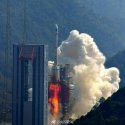Lethe
Captain
I think a little perspective is in order.
It is unreasonable to expect that the United States and other western nations would sit still for decades while China played catch-up. So the United States has developed a new generation of launch vehicles -- what of it? It does not change the fundamental trajectory of convergence between China and the United States.
The F-22 entered service in 2005, the same year as the J-10. Should China have despaired at this? Less than fifteen years later, the question seems foolish.
Indeed, given that the biggest threat to China's eventual parity and even leadership across various technological domains is that the United States might awaken from its slumber before it is too late, a symbol of American supremacy such as Falcon Heavy could prove very useful for China in continuing to lull the US Congress and the American people into a false sense of security.
It is unreasonable to expect that the United States and other western nations would sit still for decades while China played catch-up. So the United States has developed a new generation of launch vehicles -- what of it? It does not change the fundamental trajectory of convergence between China and the United States.
The F-22 entered service in 2005, the same year as the J-10. Should China have despaired at this? Less than fifteen years later, the question seems foolish.
Indeed, given that the biggest threat to China's eventual parity and even leadership across various technological domains is that the United States might awaken from its slumber before it is too late, a symbol of American supremacy such as Falcon Heavy could prove very useful for China in continuing to lull the US Congress and the American people into a false sense of security.


